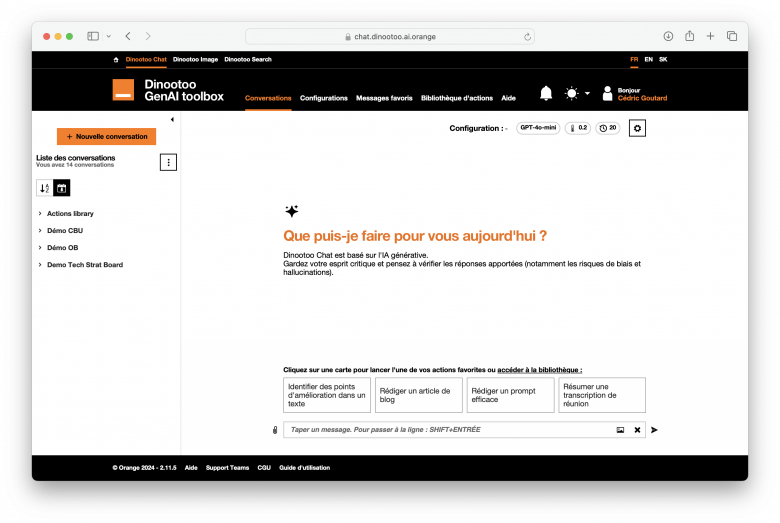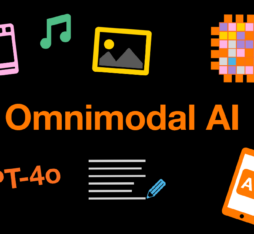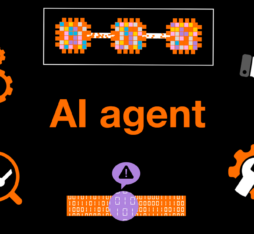• To unlock the full potential of these technologies, we must make them easy for employees to embrace and ensure that they are used in a controlled environment.
• At Orange, a secure generative AI tool based on the most powerful solutions on the market is showcasing this approach and transforming practices, and it is being adopted at an unprecedented rate.
Generative AI first appeared on the general public’s radar at the end of 2022 with the launch of Open AI’s conversational agent, ChatGPT. This solution is generating interest—if not excitement—among an audience that even includes the economic sphere.
A secure internal solution that allows employees to discover the potential of LLMs and start using them easily and securely — both for themselves and the company
Public LLMs put sensitive company data at risk
At first, this enthusiasm overshadowed legitimate questions and necessary precautions related to this technology’s implementation. Many companies do not place restrictions on the use of ChatGPT, and questions about the potential risk of internal data—including sensitive data—being exfiltrated and reused are overlooked. Yet OpenAI (and other providers) use this data to improve their models or train new ones.
“In the first half of 2023 Orange regulated the use of generative AI, prohibiting its professional use with company data”, explains Cédric Goutard, Generative AI Toolbox Product Owner within the Group. “We immediately decided to develop and deploy a secure internal solution that allowed employees to discover the potential of (LLMs) and start using them in a simple, streamlined and secure way.” The company launched this solution, referred to as Dinootoo internally, in September 2023.
Security and multi-model: the cornerstones of Dinootoo
The portal’s users can get acquainted with the world of generative AI and its lexicon (information, access to training materials etc.) and practise using it via three services.
- Dinootoo Chat is a chatbot with core features similar to those of ChatGPT, capable of processing text documents and images and generating text output. At present, the chatbot leaves it up to the user to choose which model best suits their needs among those provided by OpenAI, Google, Anthropic and Mistral.
- Dinootoo Images, as the name suggests, generates images from a using OpenAI’s DALL·E 3 AI.
- Lastly, Dinootoo Search positions itself as an information “homing device”: the user feeds text documents into the engine and asks a question, then Search springs into action to find and structure the answer (if it can be found in the documentation database provided) in the form of a summary.
“Dinootoo’s founding principle is security”, stresses Joachim Fléchaire, VP AI Tools & Technology at Orange. “The end-to-end solution needed to be secured from a technical point of view, but also a contractual one, to ensure that model and infrastructure providers would not reuse our data. Dinootoo’s other defining feature is that it is multi-LLM, bringing together different proprietary and open-source models to address a variety of use cases. The goal is for users in each branch and profession to have a model tailored to their needs at their disposal. This multi-LLM foundation also enables it to be independent of the supplier and makes users more aware of the financial and environmental costs of each model (we display this data). Orange’s expertise was key to developing a solution integrating multiple LLMs while guaranteeing a safe user experience and keeping data secure”.
A tool for AI experts and beginners alike
The team in charge of Dinootoo is continuously refining and enriching the tool, in particular to improve the user experience. A constant balancing act is needed for the solution to remain accessible to seasoned AI users and the uninitiated alike. Every employee, no matter their level of experience, has access to a library of generic actions (requests, template prompts) that they can use to carry out complex operations with the confidence that the result will measure up to their expectations. They also have access to acclimatisation and training courses, including courses on the art of creating prompts.

The tool has found a faithful userbase within the company: 45,000 employees have used it at least once and 10,000–11,000 are now regular users. They turn to the solution for a wide range of tasks: from analysing documents, to helping with software development, searching for bugs in code, translating from one programming language to another and much more.
Ongoing integration of contextual data specific to each of the Group’s verticals (legal, procurement, HR etc.) will soon take the Dinootoo solution to the next level.
Thus far, the LLMs are integrated into the solution as-is, with no Orange data other than that provided by employees. In the future, these models will be constantly fed document databases specific to the company and its professions upstream, so they can produce even better answers to serve users.
Live Intelligence: A turnkey solution for access to generative AI for businesses :
In the space of just two years, chatbots that make use of generative AI have become popular with the public. Their use within companies and communities has also grown widely, and sometimes chaotically. Mathieu Ducrot, responsible for the Live Intelligence project at Orange Business, explained the challenge of adopting LLMs (Large Language Models) within companies: “The Shadow AI trend raises serious questions about the governance and security of sensitive data, as companies expose themselves to the leakage of this data without being able to control its reach. This is why we have developed the Live Intelligence solution, a multi-LLM solution whose purpose is to support them in their operational needs by offering them flexibility and security”.
Bolstered by the Dinootoo experience and its 50,000 users, Orange is launching a proposition that can support small, medium and large companies in their adoption of generative AI solutions, without compromising on security and with the reassurance of using a trusted carrier. Among the guarantees provided by Orange is the level of confidentiality, which is reflected in particular in the solution being hosted in Europe.
Live Intelligence, announced at Orange OpenTech 2024, provides a response to the operational needs of small and medium-sized companies and to the most advanced data sovereignty requirements of large client accounts.
Large Language Models are neural networks that use large datasets and deep learning techniques to understand, summarise, generate and predict new content.
A prompt refers to the written command or instruction given to a generative AI system to shape its response.
 Cédric Goutard
Cédric Goutard












